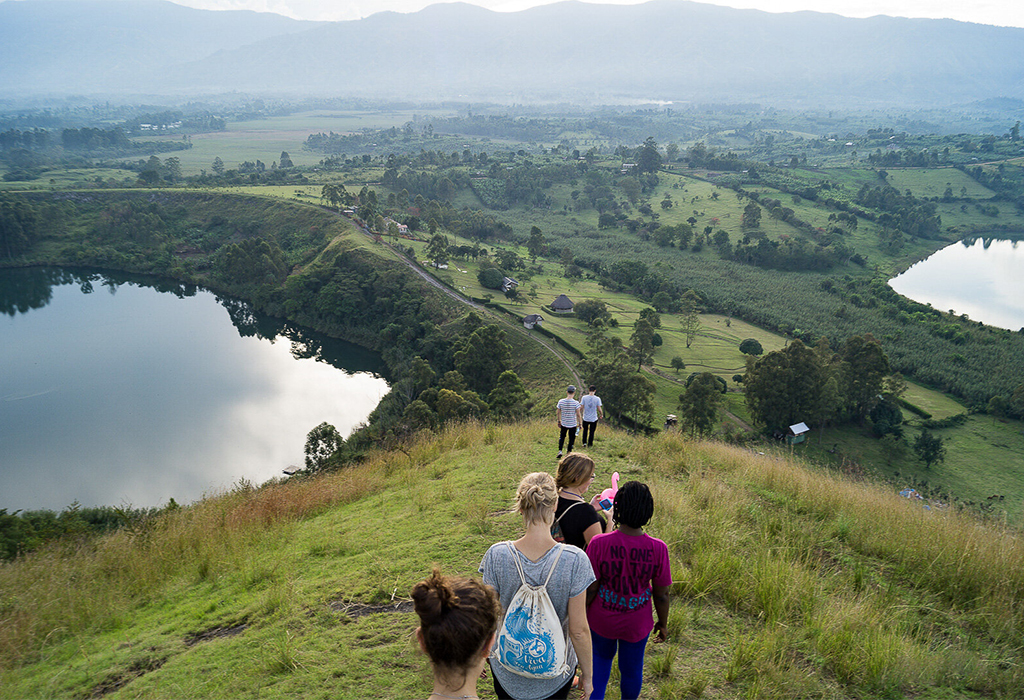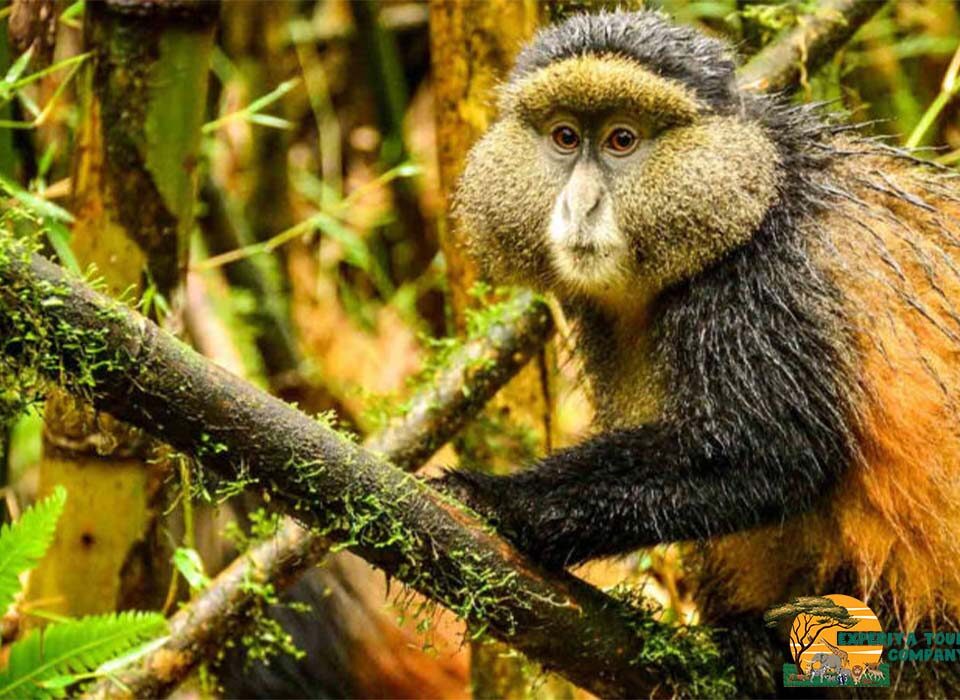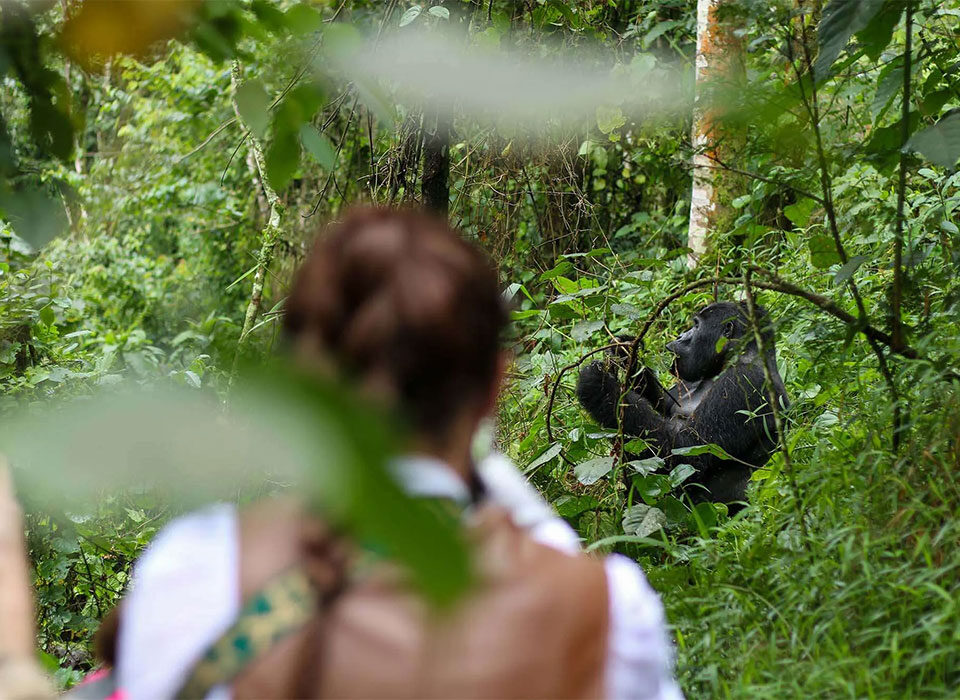
Best Locations for Scenic Photography in Uganda – Explore with Experiya Tour Company
October 25, 2025
What’s Special About the Rwenzori Mountains – Explore Uganda’s Mountains of the Moon with Experiya Tour Company
October 25, 2025Crater Lakes Near Fort Portal – Discover Uganda’s Hidden Natural Wonders with Experiya Tour Company

Are There Crater Lakes Near Fort Portal?
Tucked away in western Uganda, Fort Portal is a town of incredible beauty — a place where lush hills roll endlessly into the horizon, banana plantations shimmer under golden sunlight, and winding roads reveal secret corners of paradise. It’s no surprise that Fort Portal is often called “the tourism capital of Uganda.” Beyond its charm, this region holds one of Uganda’s most mesmerizing natural wonders: the crater lakes.
Yes, there are many crater lakes near Fort Portal — dozens, in fact — each formed centuries ago by ancient volcanic explosions that shaped the landscape into a breathtaking mosaic of emerald hills and blue-green water basins. These lakes are not only scenic but also serene, offering travelers an ideal escape from the rush of city life. Whether you’re a photographer, nature lover, hiker, or someone simply seeking tranquility, Fort Portal’s crater lakes promise unforgettable experiences.
Let’s explore these fascinating lakes, their stories, and what makes them among the most beautiful destinations in Uganda.
The Story Behind Fort Portal’s Crater Lakes
The crater lakes near Fort Portal were formed thousands of years ago as a result of volcanic activity in the Albertine Rift Valley, part of the Great Rift Valley system that stretches across East Africa. When the volcanoes exploded, they left behind massive depressions that gradually filled with rainwater over time, creating the spectacular crater lakes we see today.
Unlike other volcanic lakes, most of Fort Portal’s craters are extinct — meaning they’re perfectly safe to visit and explore. The landscape they’ve created is stunning: gentle hills covered in tea plantations and banana groves, valleys filled with lush forests, and crystal-clear lakes reflecting the surrounding greenery like mirrors.
There are more than 50 crater lakes scattered across the region, mainly concentrated in three main areas — the Ndali–Kasenda Crater Field, the Rwenzori foothills, and Kibale National Park. Each area offers its own unique character, from peaceful swimming spots to hidden lodges perched on cliffs.
The Ndali–Kasenda Crater Field – The Crown Jewel
Just 25 kilometers south of Fort Portal lies the Ndali–Kasenda Crater Field, perhaps the most famous and visually spectacular cluster of crater lakes in Uganda. Here, over 60 volcanic craters are spread across a landscape of rolling hills, tropical forests, and picturesque farmlands.
1. Lake Nyinambuga – The Iconic Reflection Lake
If you’ve ever seen the image printed on Uganda’s 20,000 shilling banknote, then you’ve already caught a glimpse of Lake Nyinambuga. This lake is one of the most photogenic in the region, surrounded by steep, green hills and often mist-covered in the morning light. Its still waters create perfect reflections of the sky, trees, and nearby hills — a scene that looks almost too perfect to be real.
Visitors can hike around the lake or relax at the Ndali Lodge, one of the most beautiful eco-lodges in Uganda, perched on the rim of the crater with panoramic views of the entire region. Sunrise and sunset views from this location are breathtaking, making it one of the top photography and relaxation spots near Fort Portal.
2. Lake Nyabikere – The “Lake of Frogs”
Just a short drive from Fort Portal town lies Lake Nyabikere, whose name means “the lake of frogs.” The name comes from the chorus of frogs that fill the air every evening, creating a natural symphony as the sun sets.
This lake is easily accessible and ideal for swimming, canoeing, or walking along the scenic trails that wind through the villages and banana plantations nearby. The area is also home to friendly local communities who often welcome visitors to learn about their culture and daily life.
Several guesthouses, such as Crater Valley Kibale and Lake Nyabikere Campsite, offer comfortable stays for travelers looking to enjoy a peaceful lakeside experience.
3. Lake Nkuruba – A Hidden Forest Sanctuary
Lake Nkuruba is another gem within the Ndali–Kasenda Crater Field. Surrounded by dense forest, it’s one of the most serene and ecologically rich lakes in the area. The Nkuruba Nature Reserve protects a wide range of wildlife, including black-and-white colobus monkeys, vervet monkeys, and over 200 bird species.
You can hike around the lake, visit local waterfalls nearby, or simply relax at the Lake Nkuruba Nature Reserve Community Camp, which offers budget-friendly eco-lodging with stunning lake views.
The calm waters here are great for swimming, and the forest setting makes it ideal for nature photography. If you’re lucky, you may even spot a troop of monkeys swinging through the trees as you enjoy your morning coffee.
4. Lake Kifuruka – The Peaceful Escape
Smaller and more secluded than some of its neighbors, Lake Kifuruka offers tranquility in its purest form. The area around the lake is home to tea plantations and farmlands, making it perfect for countryside walks. It’s also a great location for travelers looking to disconnect from modern life and experience authentic Ugandan hospitality in community-run guesthouses.
5. Lake Lyantonde – The Hilltop View
One of the more elevated crater lakes, Lake Lyantonde, rewards visitors with sweeping panoramic views of the Kasenda region. Hiking to its rim is an adventure in itself, offering stunning perspectives over the surrounding craters, forests, and farmlands. On clear days, you can even spot the distant peaks of the Rwenzori Mountains glimmering in the background.

Crater Lakes Around Kibale National Park
As you travel south from Fort Portal toward Kibale National Park, the scenery continues to dazzle. The crater lakes in this region are nestled among forests and tea plantations, creating a magical blend of nature and human life.
1. Lake Nyinabulitwa
Located just outside Kibale National Park, Lake Nyinabulitwa is a favorite for travelers seeking adventure and relaxation in equal measure. It’s one of the best places to combine crater lake exploration with chimpanzee trekking in nearby Kibale.
The lake’s shores are lined with eco-lodges and campsites that offer canoeing, birdwatching, and cultural experiences. It’s also one of the best sunset spots in western Uganda, where the golden light of evening reflects beautifully on the lake’s surface.
2. Lake Nkuruba to Kibale Connection
The route from Lake Nkuruba to Kibale National Park is particularly scenic. Along the way, travelers can stop at smaller lakes like Nyamasagani and Nyinambuga, passing tea estates and local markets. These routes make for stunning photography opportunities, with winding roads offering panoramic views of crater basins and farmlands below.
Crater Lakes Along the Rwenzori Foothills
To the west of Fort Portal, near the foothills of the Rwenzori Mountains, lie more crater lakes — smaller, cooler, and framed by mountain views. The combination of snowcapped peaks and tropical vegetation makes this area uniquely beautiful.
Lake Mahoma and the Rwenzori Trails
Though not a traditional crater lake, Lake Mahoma is worth mentioning. It lies along the lower slopes of the Rwenzoris and can be reached by hiking from Ruboni Village or Rwenzori National Park Gate. The lake’s surroundings offer crystal-clear reflections of the mountain peaks, dense rainforest, and alpine vegetation — a paradise for photographers and trekkers.
Activities to Enjoy Around the Crater Lakes
The crater lakes near Fort Portal aren’t just for viewing — they’re for experiencing. Travelers can enjoy a range of activities including:
- Hiking and Nature Walks: Trails connect several lakes, passing through villages, forests, and plantations. Guided hikes can last from an hour to a full day.
- Swimming: Many crater lakes, such as Nyabikere and Nkuruba, are safe for swimming since they’re bilharzia-free.
- Canoeing: Paddle across the calm waters in a dugout canoe and enjoy the quiet rhythm of the lake.
- Birdwatching: The region is a haven for bird lovers, with species like the Great Blue Turaco, black-headed gonolek, and sunbirds found in abundance.
- Cultural Visits: Engage with local communities to learn about coffee farming, banana beer brewing, or traditional crafts.
- Photography: With misty mornings, vibrant sunsets, and reflections on still water, every moment here is a photographer’s dream.
Best Time to Visit the Crater Lakes
The best time to visit Fort Portal’s crater lakes is during the dry seasons — from December to February and June to September. During these months, the trails are easier to navigate, and visibility is perfect for photography. The rainy seasons (March–May and October–November) make the scenery even greener but can render some roads slippery.
No matter the time of year, the temperatures around Fort Portal remain pleasantly cool, thanks to its high altitude. Mornings can be misty, offering a mystical atmosphere that’s especially beautiful for early risers.
How to Get There
Fort Portal is about 300 kilometers west of Kampala, Uganda’s capital, and can be reached in 5–6 hours by road. The journey passes through scenic countryside, tea plantations, and traditional villages. From Fort Portal town, the crater lakes are within easy reach — most are between 10 and 40 kilometers away, accessible by car or motorcycle.
Visit Fort Portal’s Crater Lakes with Experiya Tour Company
Fort Portal’s crater lakes are among the most enchanting natural wonders in Uganda — a world of peace, color, and reflection. Whether you’re watching sunrise over Lake Nyinambuga, hiking the hills around Lake Nkuruba, or photographing mist rolling off the forests, this region offers an experience that stays with you long after you’ve left.
To explore it fully and effortlessly, travel with Experiya Tour Company, Uganda’s trusted adventure and nature travel specialists. Experiya organizes customized tours to Fort Portal and its crater lakes, combining scenic exploration with cultural encounters, hiking, and wildlife adventures. With professional guides, comfortable transport, and handpicked accommodations, Experiya ensures your journey is seamless and unforgettable.
With Experiya, you won’t just visit Fort Portal’s crater lakes — you’ll experience the essence of Uganda’s natural beauty, one lake at a time.



